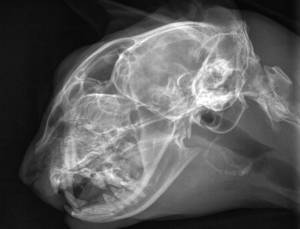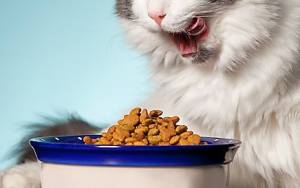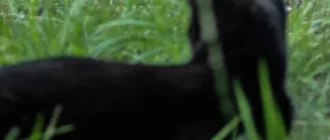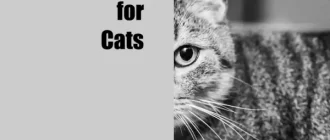What is Famotidine? Famotidine is an H2-receptor antagonist that is primarily used to reduce stomach acid production in both humans and pets. It is commonly prescribed for cats to treat various gastrointestinal issues such as ulcers, inflammation of the stomach, acid reflux, and esophageal inflammation. Though not specifically formulated for feline usage, famotidine is often administered to cats off-label, under the guidance and supervision of a veterinarian. Famotidine works by decreasing the gastric acid production in the stomach, providing relief for your pet within 1 to 2 hours of administration.

Uses of Famotidine in cats
The pills are used to treat various gastrointestinal issues in cats, such as stomach ulcers, gastroesophageal reflux disease (GERD), and excessive peptic acid production. This medication works by reducing the production of gastric acid in the stomach, allowing it to heal and helping the cat feel more comfortable. Although it is not an antiemetic, it can help manage symptoms such as vomiting, diarrhea, and lack of appetite caused by increased stomach acid or irritation to the stomach lining. It is important to consult with a veterinarian before using Famotidine for your cat, as it is prescribed off-label for feline use.
Famotidine dosage chart for cats
| Weight of Cat (lbs) | Dosage of Famotidine (10 mg tablet) |
|---|---|
| Under 5 lbs | 1/4 tablet once or twice daily |
| 5 – 10 lbs | 1/4 to 1/2 tablet once or twice daily |
| 10 – 15 lbs | 1/2 tablet once or twice daily |
| Over 15 lbs | 1/2 to 1 tablet once or twice daily |
Remember:
- Individual Response: The response to Famotidine can vary among cats. Some might need a lower dose, while others might require the higher end of the range.
- Frequency: The veterinarian might recommend administering Famotidine once or twice daily depending on the severity of the condition.
- Administration: The tablets should be administered without food, as food can decrease its effectiveness.
- Safety First: Always consult with your vet prior to beginning any medication regimen with your cat, to ensure that the treatment plan is tailored to your cat’s specific needs and health status.
How is Famotidine administered?
Famotidine is typically administered to cats orally in tablet form. The dosage ranges from 0.5 to 1 mg/kg (0.25-0.5 mg/lbs), given twice daily, ideally close to every 12 hours. It can be mixed with food, or if the cat is unwilling to eat the tablet, a pill gun can be used for administration. It’s important to follow your veterinarian’s prescribed dosage and schedule for optimal results. Famotidine may also be given as an injection in a veterinary clinic, depending on the cat’s condition and the vet’s recommendation.
Missed dose and regular dosing schedule
If a pet owner forgets to give their cat a dose of Famotidine, it is important to administer the medication as soon as they remember. However, if it is almost time for the next scheduled dose, they should skip the missed dose and proceed with the next one, returning to the regular dosing schedule. Pet owners must avoid giving their cat two doses at once or administering extra doses, as this may lead to adverse reactions. Following the veterinarian’s directions carefully will ensure the cat receives the appropriate amount of Famotidine for their condition.
Potential side effects of Famotidine
Potential side effects of Famotidine in cats are generally rare and mild when administered under the guidance of a veterinarian. However, it’s essential to observe your cat for any signs of adverse reactions when taking this medication. Some possible side effects may include vomiting, diarrhea, lethargy, dizziness, and decreased heart rate. If you notice any of these symptoms or your cat’s behavior seems out of the ordinary, it’s crucial to contact your veterinarian immediately to discuss the appropriate course of action. In extreme cases, more severe side effects may warrant additional medical attention.
Risk factors
When using Famotidine for your pet, it is important to be aware of the risk factors associated with its use. Avoid administering Famotidine to animals with a known allergy to the medication. Exercise caution when giving Famotidine to geriatric pets or those with liver, kidney, or heart disease. Also, use caution when administering Famotidine to pregnant or nursing animals, as potential effects on the offspring are not well-known. Being aware of these risk factors can help ensure the safe and effective use of Famotidine for treating gastrointestinal issues in cats.
Overdose or adverse reaction
In the event of a suspected overdose or adverse reaction to Famotidine in your cat, it is crucial to act quickly and follow proper emergency procedures. First, call your veterinarian’s office immediately for guidance. If they are unavailable, follow their recommendations for contacting a nearby emergency facility. Be prepared to provide information about the medication and dosage given, as well as any symptoms your cat is displaying. Follow the instructions given by the veterinary professional closely to ensure the best possible outcome for your cat’s health and safety. Remember that timely action can make a significant difference in such situations.






